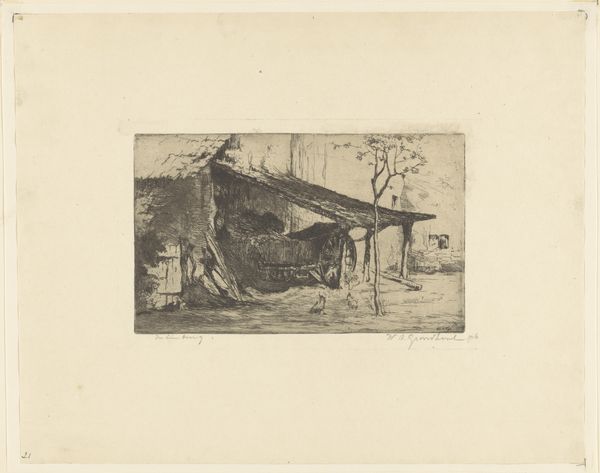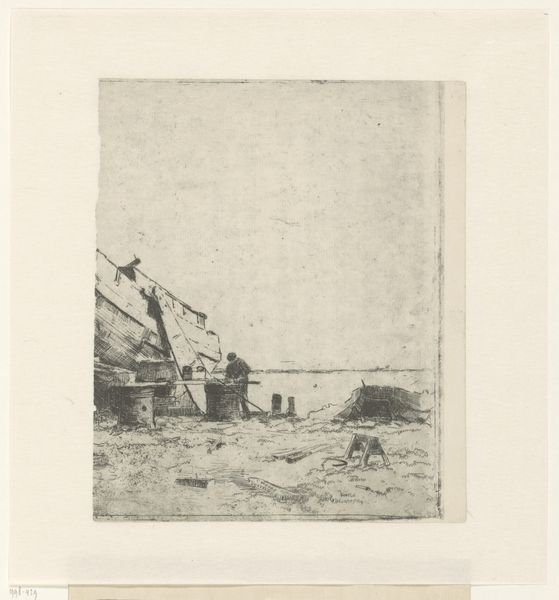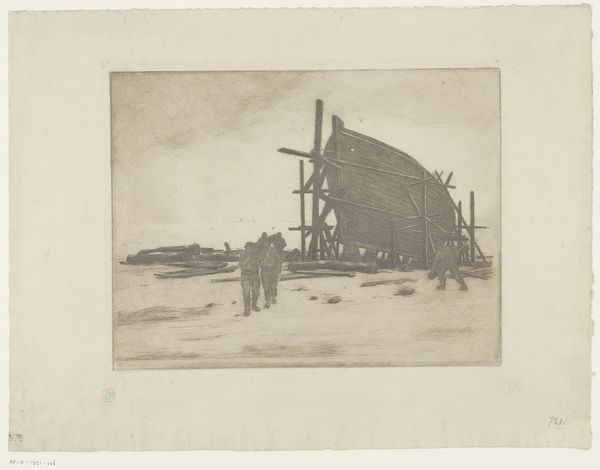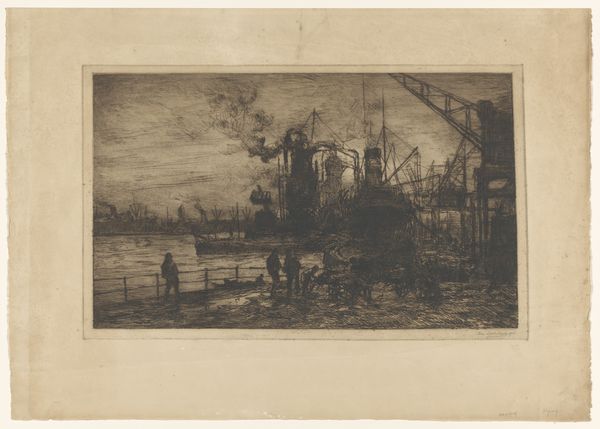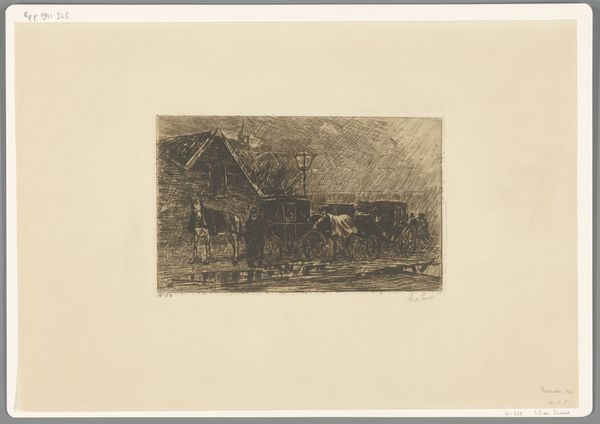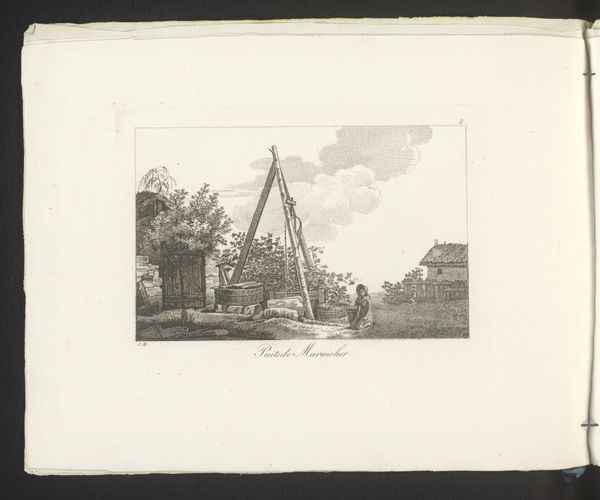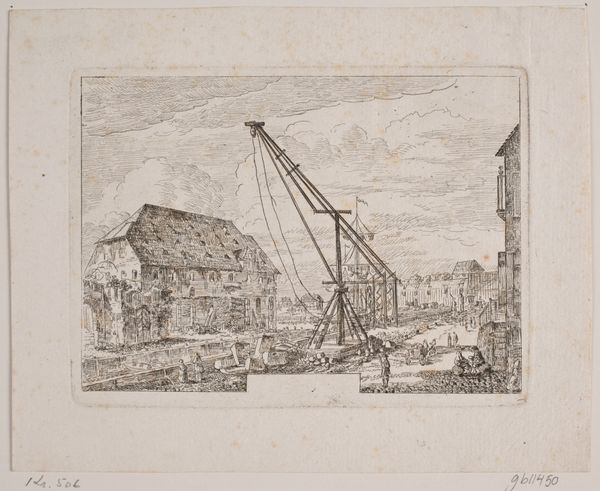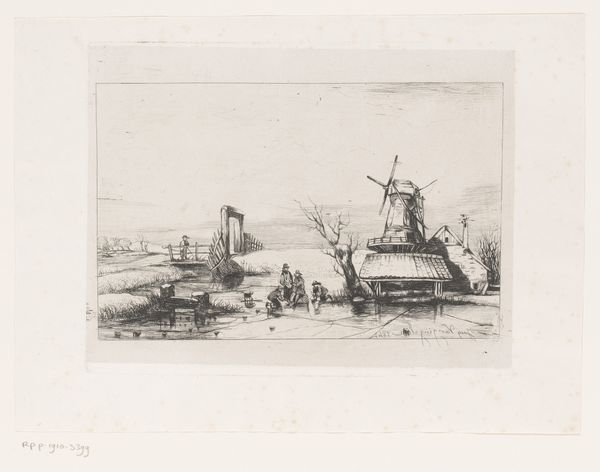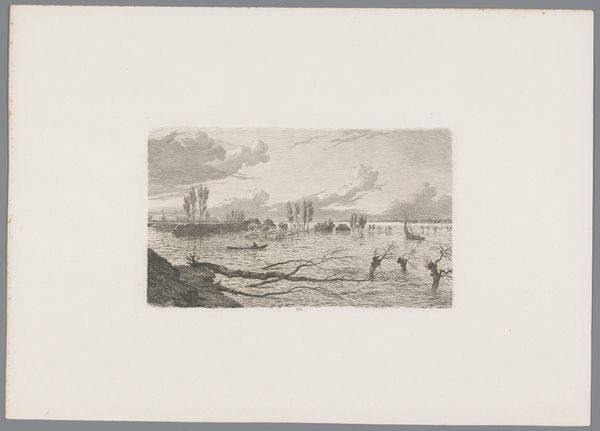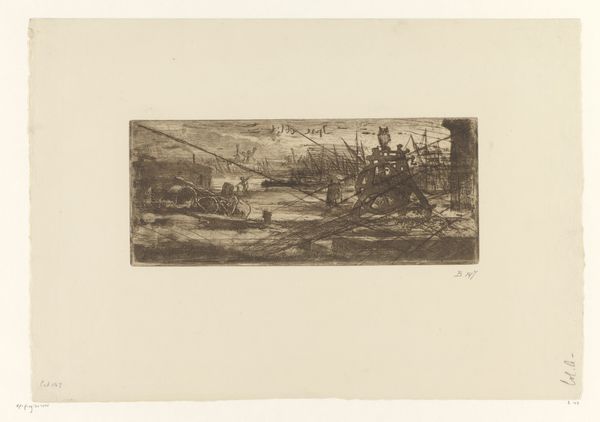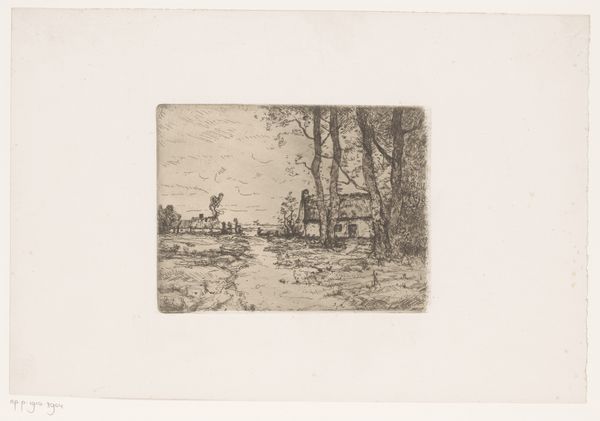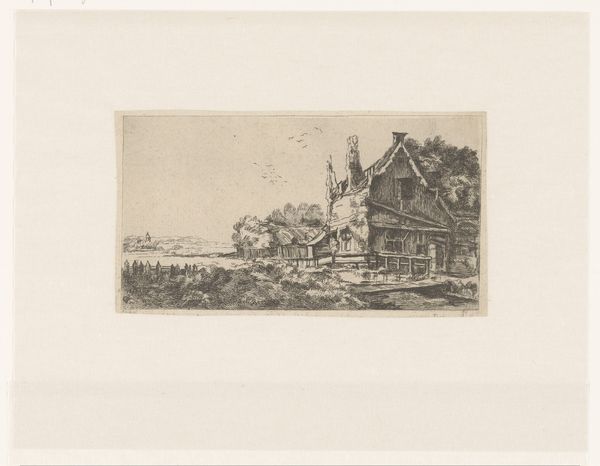
drawing, print, etching, paper
#
drawing
#
aged paper
#
toned paper
#
light pencil work
# print
#
etching
#
landscape
#
paper
#
personal sketchbook
#
united-states
#
cityscape
Dimensions: 145 × 205 mm (image); 170 × 230 mm (plate); 248 × 309 mm (sheet)
Copyright: Public Domain
Editor: We're looking at "Danube," an etching done by Otto Henry Bacher in 1879. The light pencil work creates this dreamlike image of what looks like a city on a river. There's a crane there, and everything's a little smudgy, in a lovely way. What stands out to you when you see it? Curator: It's like stumbling upon a forgotten memory, isn't it? That crane, jutting into the sky… I wonder, what was Bacher hoisting with his dreams in that moment? He probably wasn't thinking that deeply! Remember that Bacher loved working "en plein air," in open air with few corrections to retain spontaneity. Do you get a sense of speed in how he committed to the plate? Editor: Definitely. It feels like a quick sketch he decided to make permanent. Curator: Exactly. Look at the buildings leaning into each other as if whispering secrets. Each scratch on that plate is a secret revealed. And yet the toned paper has a story to tell, too. Imagine what lives it has lived! Editor: It's easy to imagine this fitting into someone's personal sketchbook. It captures such an unassuming and calm scene. What I’m also struck by is the fact that the sky is entirely absent. Did the absence of sky contribute to Bacher’s aim in representing a landscape scene? Curator: Perhaps the point of view and his concentration upon a tonal sketch in line eliminated the need. Sometimes the less there is, the more there is. But seriously, there’s something romantic about this vision, and what isn’t seen in its story. So, what's your Danube takeaway? Editor: The way the piece balances that quick, on-site feeling with this lingering, dreamlike quality. Thanks for unlocking a richer appreciation for Bacher's artistic choices! Curator: The pleasure was all mine, I learned new perspectives today, too!
Comments
No comments
Be the first to comment and join the conversation on the ultimate creative platform.
